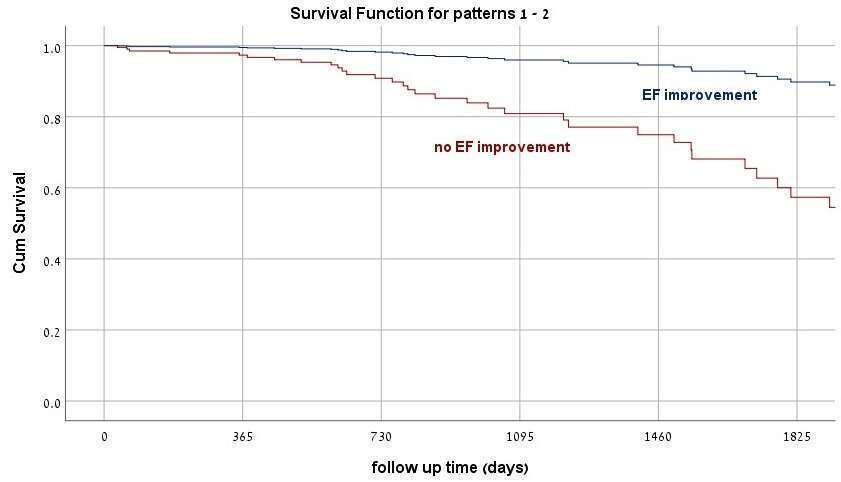
Improvement in Systolic Function in Heart Failure Patients with Reduced Ejection Fraction After Percutaneous Coronary Intervention: Impact on Long-term Survival
Background: Coronary artery disease (CAD) is the leading cause of heart failure with reduced ejection fraction (HFrEF). While current guidelines recommend revascularization attempt with percutaneous coronary intervention (PCI) or coronary artery bypass grafting (CABG) in patients with HFrEF and evidence of myocardial ischemia, there is only anecdotal evidence supporting its benefit. We assessed improvement in left ventricular ejection fraction (LVEF) in patients with HFrEF and CAD in whom PCI was performed, and its impact on survival.
Methods: Consecutive patients with LVEF ≤40% who underwent PCI and had follow-up echocardiography at 1 to 24 months between the years 2000-2020 were included. Those with myocardial infarction (MI) at presentation, or with MI, CABG, resynchronization therapy or MitraClip implantation between baseline and follow-up echocardiography were excluded.
Results: A total of 100 patients were included with mean age 68.5±11.5 years; 12 (12%) were female. LVEF has improved by ≥10% in 16 (16%). Those with improved LVEF were less often females (9.5% vs 25.0%; P=0.081) and younger (67.8±11.4 vs 72.0±12.0 years; P=0.180). At a median follow-up time of 1,017 [559-1,910] days, mortality rate was 18.8% in the improved LVEF group and 46.4% in those without LVEF improvement (P=0.04). In a Multivariable Cox model including age, gender, hypertension, diabetes mellitus and renal failure, ≥10% LVEF improvement was independently associated with a decreased mortality rate (HR=0.19 [95% CI, 0.56-0.67]; P=0.009).
Conclusions: In the majority of patients with HFrEF and CAD in whom PCI was performed, improvement in LVEF by ≥10% was not demonstrated. At long-term follow-up, mortality was significantly lower in those with improved LVEF.
Powered by Eventact EMS